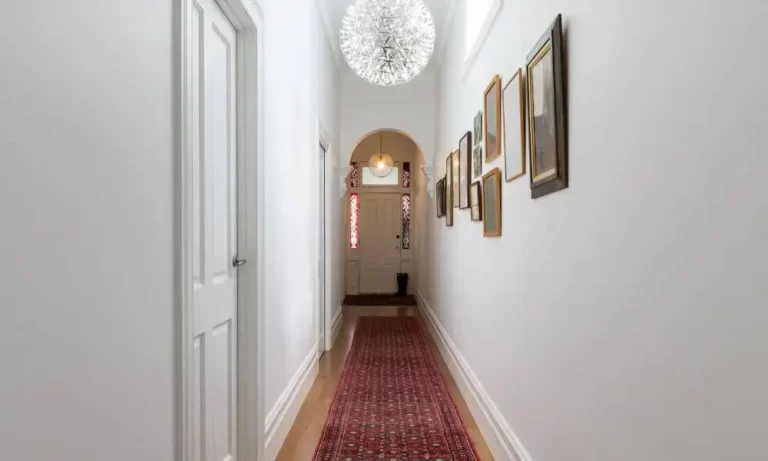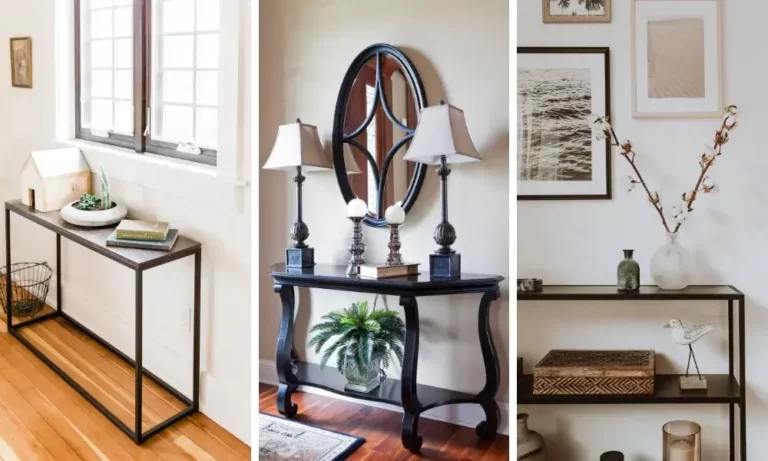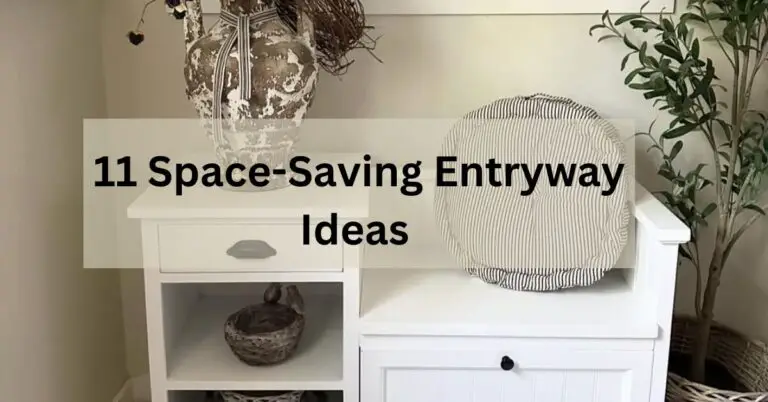How Do You Protect An Entryway Floor? (Additional Tips)
Your entryway floor goes through a lot, which is why it requires more effort to protect it compared to your whole house. But how do you protect an entryway floor? Is there something extra you can do to make sure it stays damage free?
For protecting an entryway floor, the first thing to do is to use high-quality rugs or doormats in the entryway. This will protect the floor from getting damaged by scratches and moisture. Do not keep shoes on the entryway floor. In addition, make sure that the furniture you’re placing there is not scratching the floor.
There are other tips and tricks you can use to protect your entryway floor. Feeling curious? Make sure to read the entire article so that you don’t miss out on anything.
5 Tips To Protect An Entryway Floor
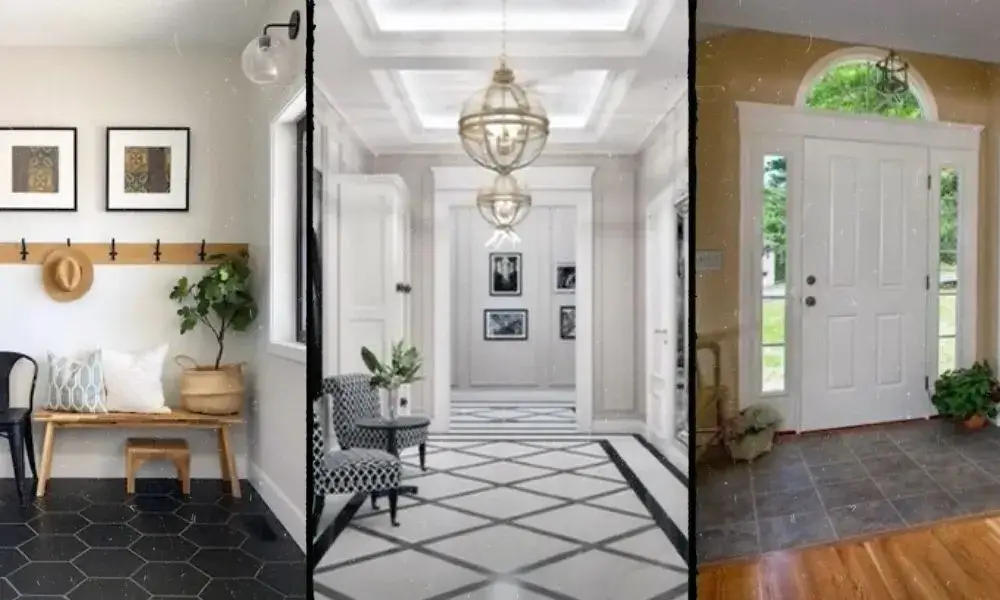
Protecting your entryway floor is not difficult if you’re smart enough. If you have hardwood floors, you must use extra precautions because they’re more susceptible to damage. So, let’s see some brilliant ideas to protect your precious entryway floor.
1. Quality Rugs

Photo Credit: @stylebydesignco
The first thing to do is to put enough effort into finding a quality rug. A high-quality rug will not only keep your floor from getting scratched but also protect it from scratch. Unlike regular small rugs, you can always go for an oversized one to ensure that it covers more area.
If you get something that absorbs too much moisture, the floor will get damaged even when it’s covered. So, make sure that you’re going for something that can protect the floors from liquid damage.
Before placing the rug, make sure that you thoroughly clean the floor. There shouldn’t be any liquid, dust, or debris beneath the rug. We particularly recommend rugs for an entryway because it serves multiple purposes.
Even if you are not thinking about protecting the floor, a rug can instantly improve the way your house looks. It makes your home more welcoming to the people. In addition, it keeps the area neat and clean.
Another thing rugs are really great at doing is preventing scratches. Whether you have pets or freestanding furniture in the entryway, rugs can protect the floors from scratches. So, don’t save money on this one and get a good-quality rug for your entryway that matches the interior.
2. Doormats

Photo Credit: @mayne.home.reno
If you’re not into rugs at all, at least get a doormat for the entryway. This is mandatory if you’re not getting a rug. Many people confuse these two terms and use them interchangeably.
However, there are significant differences between a rug and a doormat. A rug is usually heavyweight and made from woven material used for covering floors. A doormat, on the other hand, is lightweight and used for wiping feet before entering the house.
A doormat can be an alternative option if you don’t want to invest in a rug. However, a doormat will not cover as much area as a rug. So, make sure that you’re thinking it through.
Doormats are great for trapping dirt from the feet. Placing one in front of your door will naturally encourage your guests to wipe their feet when they enter. However, even if they don’t do it, doormats can absorb a lot of dirt from the shoes.
This is mostly applicable if you don’t have a no-shoe policy in your home. Entering the home with shoes brings more dirt and dust, which can be reduced using a doormat.
3. Avoid Placing Shoes On The Floor

Photo Credit: @dazzlehub__
Always keep a separate area dedicated to shoes. Keeping your shoes on the entryway floor will certainly damage the floor over time. Shoes contain water, moisture, and dirt which are all enemies of your floor.
If you have hardwood floors, you should be more careful about using shoes in the entryway. Some wood types are softer compared to others, thus less suitable for heavy stomping. So, if you can introduce a no-shoe policy for the home, it will be the best decision for your entryway.
Or, you can make sure that you have a basket, a rack, or something else where people can keep their shoes instead of your entryway floor. This is applicable if you can’t arrange a place for shoes outside the door.
If guests must enter the home with their shoes, there should be a shoe rack or a shoe tray to store them away from the flooring.
4. Use Felt Tips For Your Furniture

Photo Credit: @swag.online.store
This may sound weird to many people, but it can help you keep the entryway floor intact. The first rule of thumb is not to use freestanding furniture if you want your floor to last long. But that’s not a practical solution.
You can’t install all the furniture in a floating position. So, whenever you’re placing freestanding seating or storage in the entryway, make sure you’re covering the legs with felt. It can prevent the furniture from damaging the floor.
Even when you drag the furniture across the room, the floor won’t scratch because of the covers. This is an affordable solution for protecting your entryway floors from scratch. Note that you will have to replace the felt from time to time.
They tend to get damaged over time and can damage the floor without you knowing. So, make sure to give them a check from time to time. Many people don’t think it’s an essential thing to do, but once you notice the difference, you will be motivated to do that for all of your furniture.
5. Don’t Leave Liquid For Too Long
If your entryway is not protected by a rug, make sure that the area is always dry. Even in case of accidental spillage, ensure to wipe and clean the area dry immediately afterward. Otherwise, unnecessary bacteria may build up and damage the floor for good.
So, even if it sounds a bit bothersome to do, we recommend cleaning the entryway right after something falls on it. Another thing to mention here is to clean the entryway regularly. Dust and dirt can also damage the area if left for too long.
Some Additional Tips To Protect Entryway Floor
- Even if you have rugs on the entryway floor, make sure to clean the floor every now and then. Remove the rug, clean underneath it, clean the rug, and then place it back on.
- If your interior design allows it, install floating furniture like floated seating, floated cabinets, etc. This will keep the pressure minimum on the flooring.
- Avoid entering the house with shoes on your feet. Not all hardwoods are capable of withstanding rough heels or boots for a long time. Implementing a no-shoe policy will certainly help if you’re determined to protect the floor.
- Avoid investing in an expensive rug if your entryway gets dirty too often. A cheaper alternative like a doormat will be more sensible in such situations.
- Keep your walkway clean. It’s a significant source of dirt that gets dragged inside.
- Create separate areas for keeping coats, umbrellas, hats, scarves, etc. A cluttered entryway is not ideal for the floor. Keep everything organized.
- If it’s possible, arrange a rack for keeping the shoes outside. Also, keep a basket for storing wet umbrellas depending on the season.
- Having carpets on the entryway floor is great. However, you need to make sure that the carpet is clean. Don’t forget to vacuum clean your carpet when it seems necessary.
- There is no fixed frequency of cleaning. It entirely depends on how frequently you’re using the entryway and how dirty it is getting. Some may need to clean their entryway more frequently than others and vice versa.
Frequently Asked Questions
How do you protect hardwood floors in the entryway?

Some basic things can improve the survival period of your hardwood entryway. For instance, cover the entryway area with a large rug. Avoid entering the house with shoes on. Use felt tips for furniture legs and add plastic sides for metal furniture. Finally, always keep your floors clean.
When installing hardwood floors, make sure they’re coated with the right materials. A long-lasting coating will help you prevent damage, even if it’s a heavy-traffic area like the entryway.
How do I keep my entryway clean in the winter?
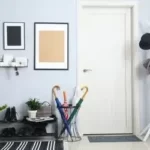
When it’s winter, cover as much area as possible with a rug or a doormat. Keep a basket or container for storing umbrellas. Don’t enter the house with wet shoes. You can install a rack for storing the shoes.
Make sure to install seating and storage for the entryway area. This ensures that the entryway stays decluttered.
Final Say
So, how do you protect an entryway floor? In simple words, keep the area covered, clean it regularly, and avoid keeping shoes on it. You can always do more.
However, taking care of the primary sources of damaging an entryway floor is enough. You can’t limit the traffic in this area because that’s the entrance to your house. What you can do is take a bit of extra care so that it can bear the pressure without any long-term damage.

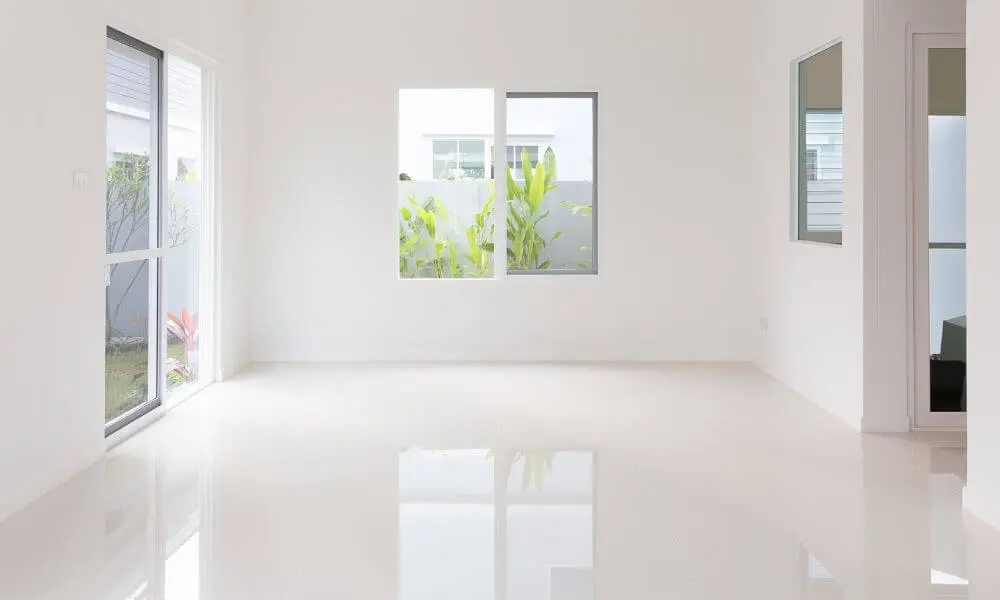
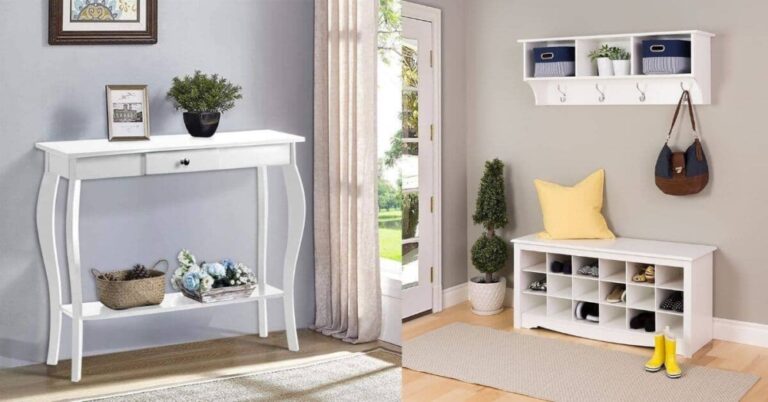
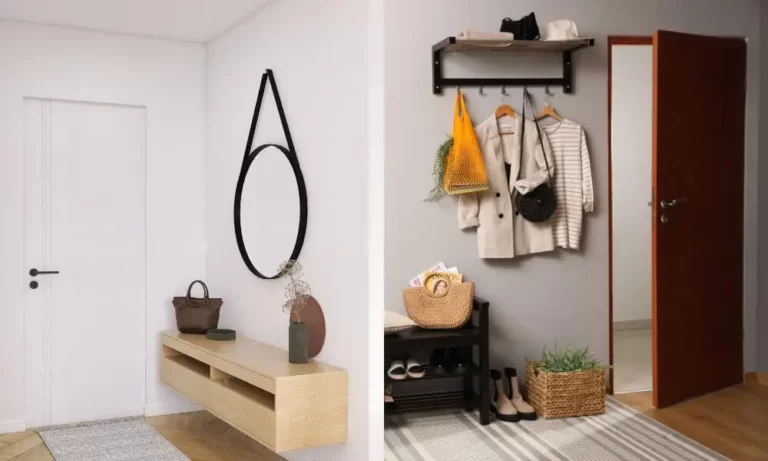
![How Do You Store Shoes In A Narrow Entryway? [14 Hacks] How Do You Store Shoes In A Narrow Entryway](https://smallspacepros.com/wp-content/uploads/2022/09/How-Do-You-Store-Shoes-In-A-Narrow-Entryway-768x499.webp)
